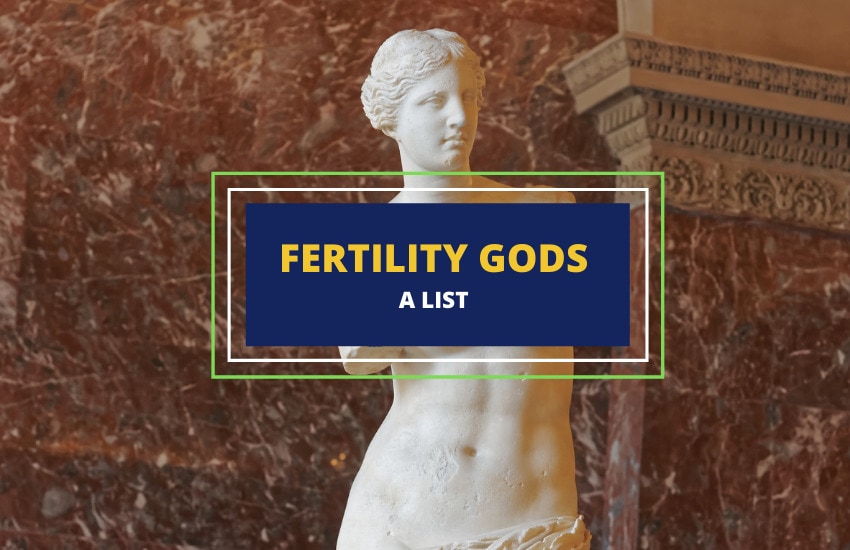
Table of Contents
Almost every culture has its own gods and goddesses of fertility, present in most mythologies. Rituals and offerings to these gods were the only known way to enhance fertility or seek cures for infertility.
People in ancient times associated the phases of the moon with women’s menstrual cycle, explaining why moon deities are commonly linked with fertility. In some cultures, female fertility was also believed to influence the fertility of the cultivated land. No wonder, some of the earliest deities related to fertility were also associated with agriculture and rain, and their festivals were often held during the harvest season.
This article will outline a list of popular fertility gods and goddesses from both ancient and contemporary cultures,
1- Inanna goddess
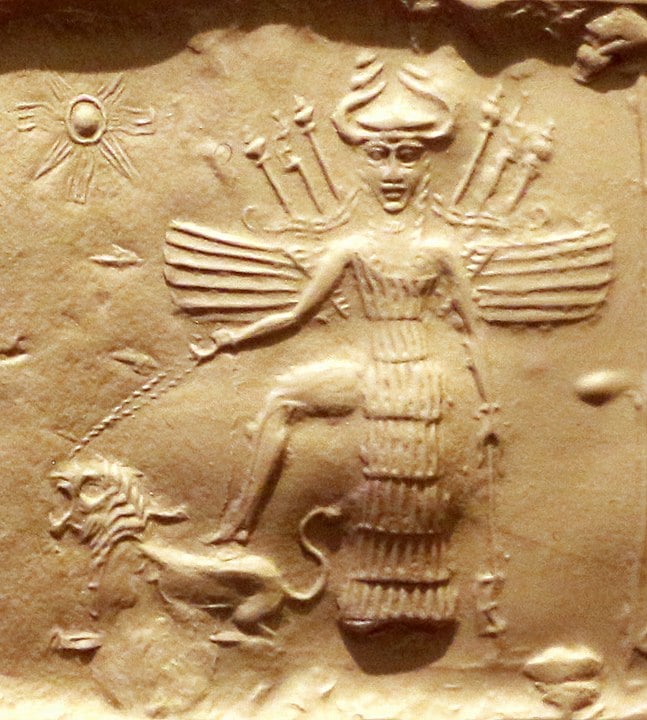
The Sumerian goddess of fertility and war, Inanna was the patron deity of the southern Mesopotamian city of Unug. The Eanna temple was dedicated to her she was worshipped around 3500 BCE to 1750 BCE. In glyptic art, she’s commonly portrayed with a horned headdress, wings, tiered skirt, and weapon cases at her shoulders.
Inanna is mentioned in the temple hymns and cuneiform texts such as the Inanna’s Descent and the Death of Dumuzi, and the Epic of Gilgamesh, where she appears as Ishtar. In earlier times, her symbol was a bundle of reeds, but later became a rose or a star during the Sargonic period. She was also seen as the goddess of the morning and evening stars, as well as the rain and lightning goddess.
Ishtar
The Mesopotamian goddess of war and fertility, Ishtar is the counterpart of the Sumerian goddess Inanna, and was symbolized by an eight-pointed star. The center of her cult was at Babylon and Nineveh, around 2500 BCE until 200 CE. The best-known myth about her is The Descent of Ishtar to the Underworld, but she also appears in the Etana Epic and the Epic of Gilgamesh. Many historians say that she’s probably the most influential of all ancient Near Eastern goddesses.
2- Min god
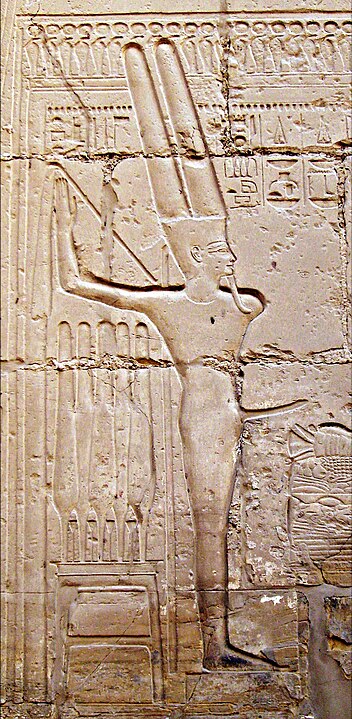
The Egyptian fertility god, Min was the most significant deity in the pantheon in regard to sexual virility. He was worshipped from 3000 BCE. The fertility god was honored as part of the coronation rites of pharaohs, ensuring the sexual vigor of the new ruler.
Min was commonly portrayed in anthropomorphic form wearing a modius—and sometimes presented with offerings of sacred lettuce and flowers. By the end of the 2nd millennium, he became merged with Horus, and known as Min-Horus. His temples at Akhim and Qift were only known from the Greco-Roman period, though he was featured in the Pyramid Texts, coffin texts, and stone reliefs of the time.
While the worship of Min declined over time, he is still considered a deity of fertility, and women who wish to become pregnant still continue the practice of touching the penises of statues of Min.
3- Anat goddess
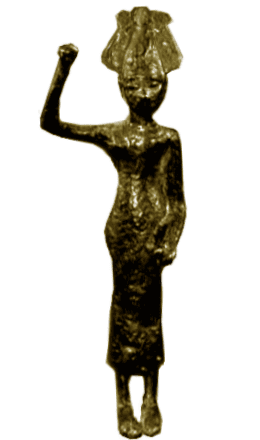
From prehistoric times around 2500 BCE until 200 CE, Anat was regarded as the fertility and war goddess of the Phoenicians and Canaanites. The center of her cult was at Ugarit, as well as at corn-growing coastal regions of the eastern Mediterranean. She’s also called the mistress of the sky and the mother of the gods. A temple was dedicated to her at Tanis, an ancient city in the Nile River delta, and she’s featured in the Tale of Aqhat.
4- Telepinu god
Telepinu was the vegetation and fertility god of the Hurrian and Hittite people, who lived in the ancient Near East in what is now Turkey and Syria. His worship was at its height from around 1800 BCE until 1100 BCE. He may have received a form of tree worship, in which a hollow trunk was filled with harvest offerings. In mythology, he goes missing and is rediscovered to represent the restoration of nature. During his disappearance, all animals and crops die due to the loss of fertility.
5- Sauska goddess
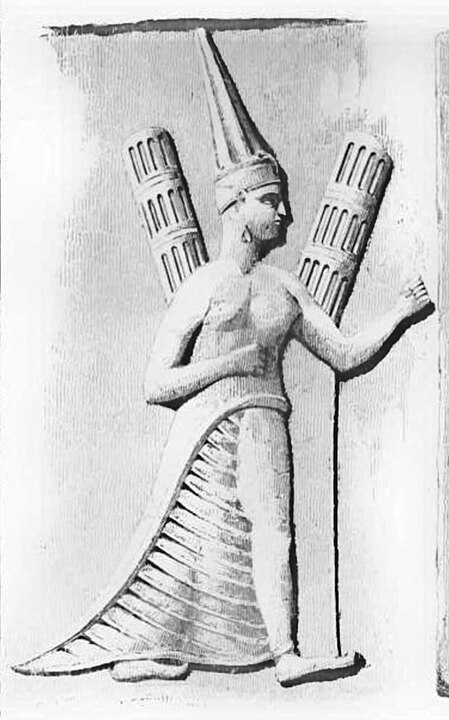
Sauska was the Hurrian-Hittite goddess of fertility and was also associated with war and healing. She was known from the time of the Hurrians throughout the ancient empire of Mitanni. Later, she became the patron goddess of the Hittite king Hattusilis II and was adopted by the Hittite state religion. She was called upon to increase one’s ability to conceive a child, as well as the fertility of the earth. The goddess is usually depicted in human form with wings, accompanied by a lion and two attendants.
6- Ahurani goddess
The Persian goddess Ahurani was invoked by people for fertility, health, healing, and wealth. It’s believed that she helped women to become pregnant and brought prosperity to the land. Her name means belonging to Ahura, as she’s the mistress of the Zoroastrian god Ahura Mazda. As a water goddess, she watches over the rain that falls from the heavens and calms the waters.
7- Astarte goddess
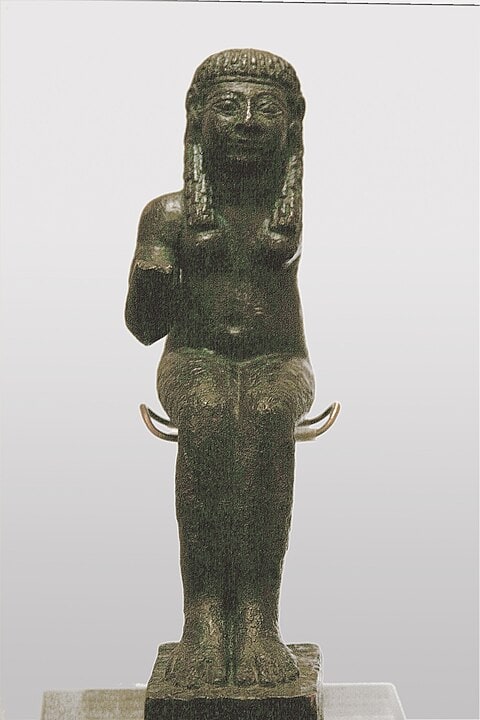
Astarte was the fertility goddess of the Phoenicians, as well as the goddess of sexual love, war, and the evening star. Her worship spanned from around 1500 BCE to 200 BCE. The center of her cult was in Tyre, but also included Carthage, Malta, Eryx (Sicily), and Kition (Cyprus). The sphinx was her animal, usually depicted on the side of her throne.
Hebrew scholars speculate that the name Astarte was merged with the Hebrew term boshet, meaning shame, suggesting the Hebrews contempt for her cult. Later, Astarte became known as Ashtoreth, the fertility goddess of the Palestinians and the Philistines around 1200 BCE. She was mentioned in the Vetus Testamentum, since the biblical king Solomon is said to have built a sanctuary for her in Jerusalem.
8- Aphrodite
The Greek goddess of sexual love and fertility, Aphrodite was worshipped from 1300 BCE until the Christianization of Greece around 400 CE. According to historians, she seems to have evolved from the Mesopotamian or Phoenician goddess of love, recalling goddesses Ishtar and Astarte.
Even though Homer called her Cyprian after the region famed for her worship, Aphrodite was already Hellenized by the time of Homer. She’s mentioned in the Iliad and Odyssey, as well as in Hesiod’s Theogony and Hymn to Aphrodite.
Venus
The Roman counterpart of the Greek Aphrodite, Venus was worshipped around 400 BCE to 400 CE, especially at Eryx (Sicily) as Venus Erycina. By the 2nd century CE, Emperor Hadrian had dedicated a temple to her on the Via Sacra in Rome. She had several festivals including the Veneralia and the Vinalia Urbana. As the embodiment of love and sexuality, Venus was naturally connected with fertility.
9- Epona
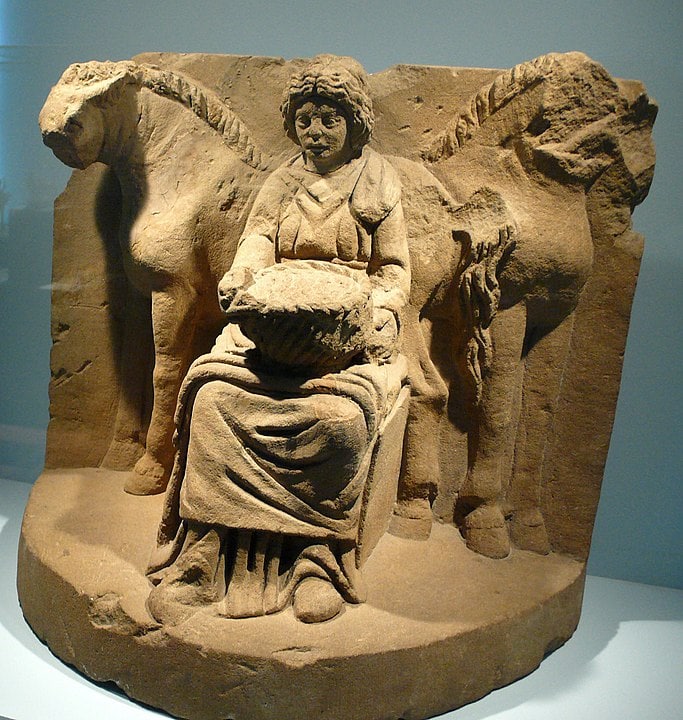
The Celtic and Roman goddess of fertility, Epona was also the patron of horses and mules, worshipped from 400 BCE until Christianization around 400 CE. In fact, her name is derived from the Gaulish term epo, which is the Latin equo for horse. Her cult probably originated in Gaul but was later adopted by the Roman cavalry. The goddess was concerned with the fertility and healing of domestic animals, and is commonly depicted with horses.
10- Parvati goddess
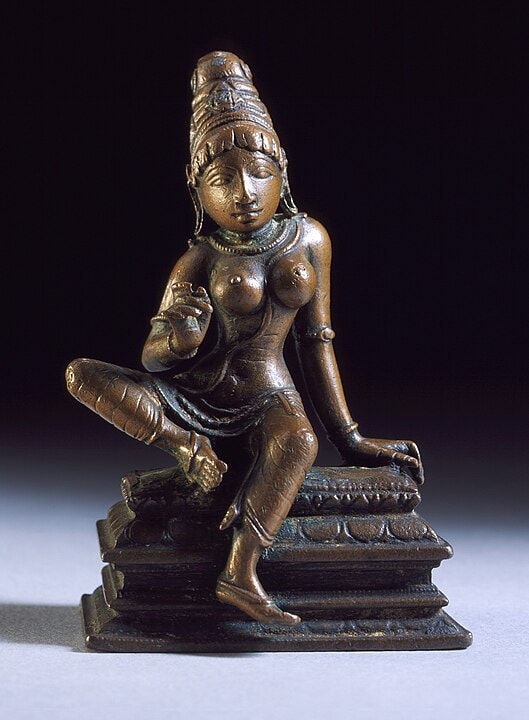
The wife of the Hindu god Shiva, Parvati is the mother goddess associated with fertility. Her worship began in 400 CE and has continued until the present. Historians believe that she may have originated in the mountain tribes in the Himalaya. She appears on Tantras and Puranic texts, as well as in Ramayana epic. She’s commonly depicted with four arms when standing alone, but sometimes portrayed with her elephant head son Ganesha.
11- Morrigan goddess
The Celtic goddess of fertility, vegetation and war, Morrigan displays various characteristics which are both regenerative and destructive. She had various sanctuaries throughout Ireland, from prehistoric times until Christianization around 400 CE. She’s associated with both war and fertility. In association with the vitality of Irish kings, she had the appearance of either a young girl or a hag. If Morrigan and the warrior god Dagda coupled during the festival of Samhain, it was thought to ensure the fertility of the land.
12- Fjorgyn
Fjorgyn was an early Norse fertility goddess worshipped during the Viking period around 700 CE until 1100 CE. Nothing much is known about her, but it’s suggested that she’s the mother of Thor and the mistress of the god Odin. There’s a little mention of her in various Icelandic codices, but she appears in the Voluspa of the Poetic Edda.
13- Freyr and Freyja
As the Vanir god and goddess, Freyr and Freyja were concerned with the fertility of the land, as well as with peace and prosperity. The center of their cult was at Uppsala in Sweden and Thrandheim in Norway, but they had various shrines throughout the Nordic countries.
It’s believed that the twins Freyr and Freyja had a central role in the old Scandinavian religion, as people of the Viking age relied on farming—and fertility gods ensured successful harvests and increased wealth. Apart from the agricultural side of fertility, Freyr was also invoked at weddings to ensure virility.
14- Cernunnos god
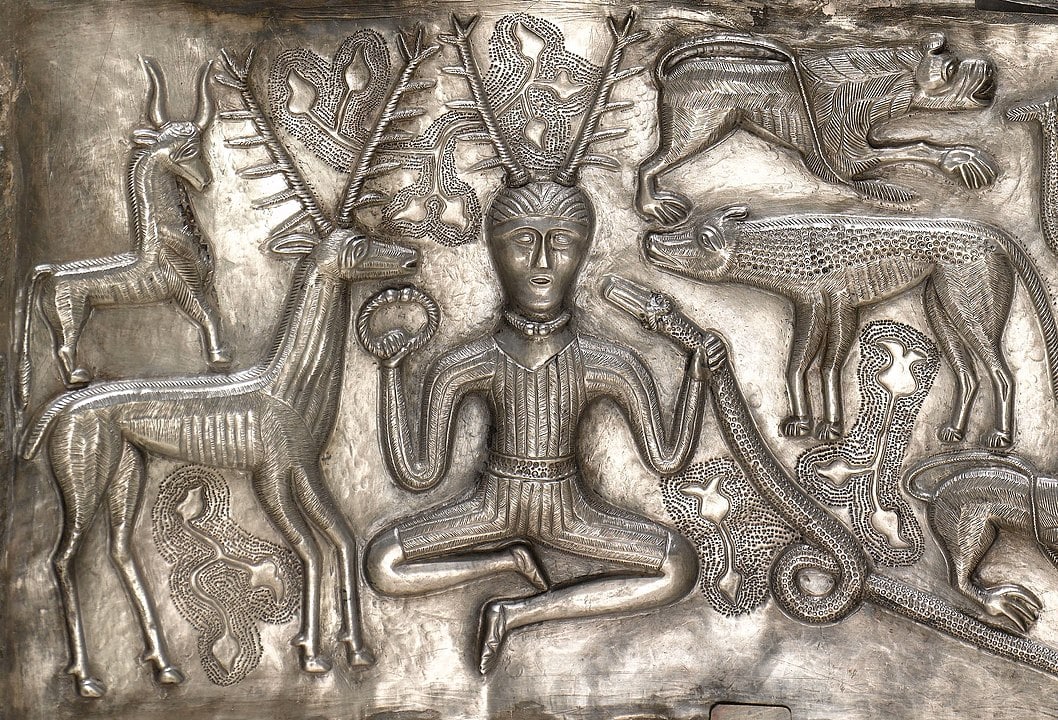
Cernunnos was a Celtic fertility god who seems to have been worshipped in Gaul, which is now central France. He’s commonly portrayed as a man wearing stag antlers. Antlers and horns were generally regarded as symbols of fertility and virility by the Celts. He appears on the famous Gundestrup Bowl from Denmark, dating to about the 1st century BCE.
15- Brigit
Brigit was a fertility goddess associated with prophecy, crafts and divination. She has a Celtic origin, mainly Continental European and Irish, and was worshipped since prehistoric times until Christianization around 1100 CE. She was later Christianized as St. Brigit of Kildare, who founded the first female Christian community in Ireland. She’s mentioned in the Books of Invasions, Cycles of Kings, and various inscriptions.
16- Xochiquetzal
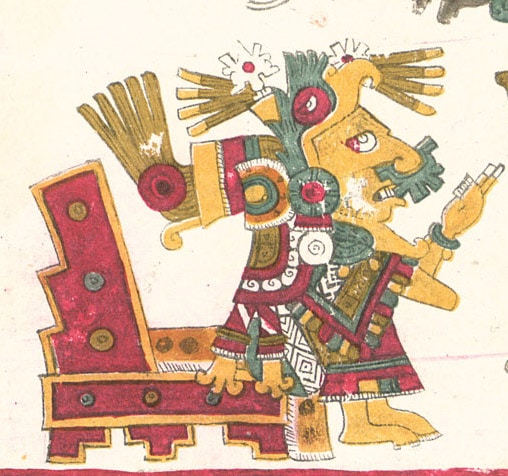
The Aztec goddess of fertility and childbirth, Xochiquetzal was invoked to make a marriage fruitful. According to tradition, a bride would plait her hair and coil it around, leaving two plumes, which symbolized the feathers of the Quetzal bird, who was sacred to the goddess. In the Nahuatl language, her name means Precious Feather Flower. According to mythology, she came from Tamoanchán, the paradise of the west, and was worshipped mainly at Tula, an ancient city in Mexico.
17- Estsanatlehi
Estsanatlehi is the fertility goddess of the Navajo people, the Native Americans of the Southwestern United States. She was likely the most powerful deity in the pantheon, as she possessed powers of self-rejuvenation. She’s also the mother of the war god Nayenezgani and the consort of the sun god Tsohanoai. As a benevolent goddess, she’s believed to send the rains of summer and warm winds of spring.
Wrapping Up
Fertility gods and goddesses played important roles in many ancient cultures. In order to ensure offspring and successful harvests, our ancestors looked up to the patrons of childbirth, motherly deities, bringers of rain, and protectors of crops.








